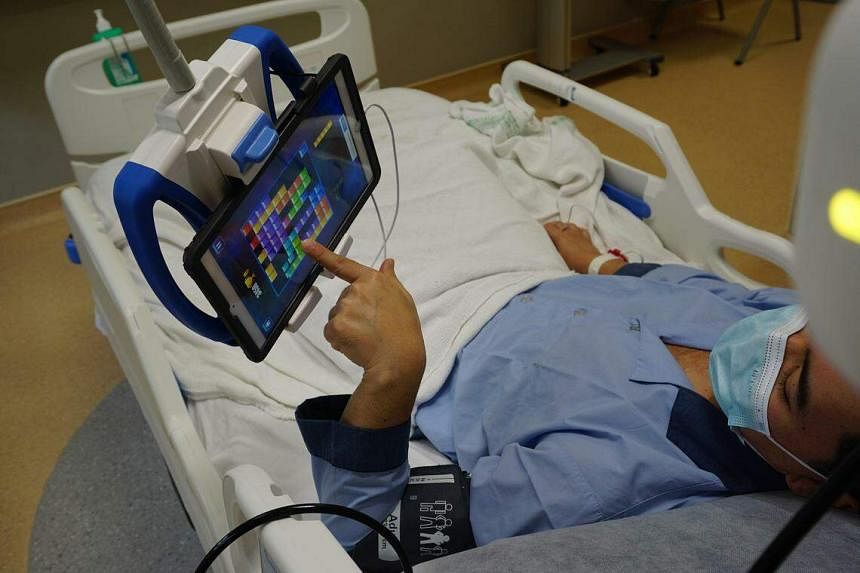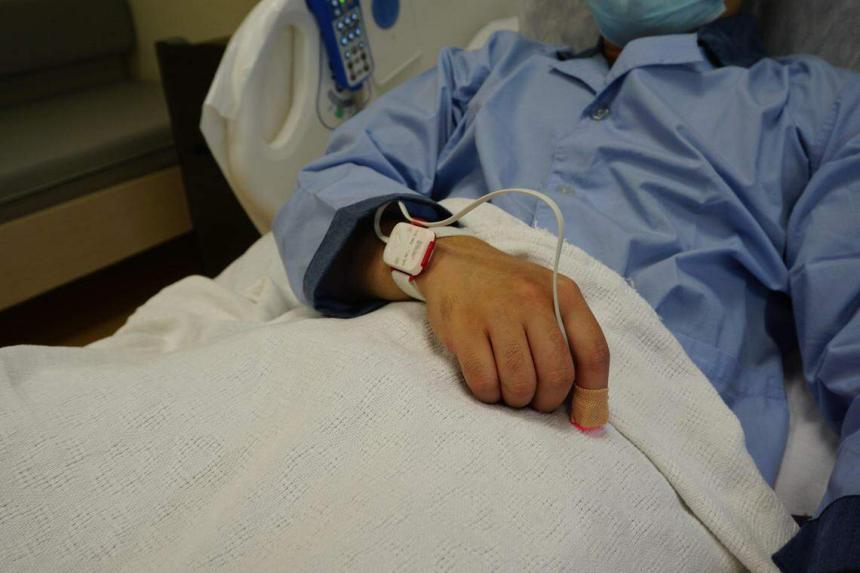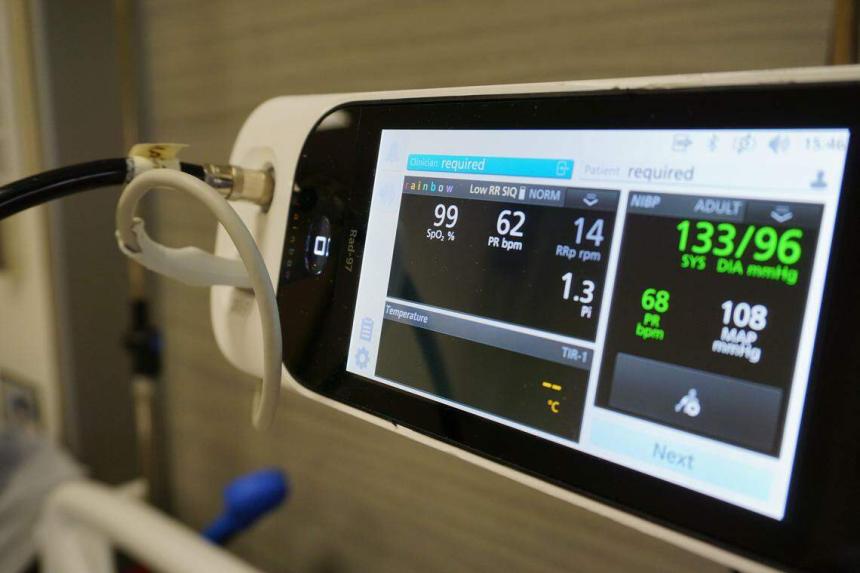SINGAPORE – Reaching an elderly patient within seconds before he gets off his hospital bed and falls, or using hands-free wearable devices to update doctors off-site on the patient’s condition.
Such advancements, deemed as the future of hospitals, are already in Singapore as healthcare institutions here shift to smart technology to address manpower shortage and to look after a rapidly ageing population.
The smart ward team at Tan Tock Seng Hospital (TTSH), for instance, leverages digitalisation, robotics and artificial intelligence to change the way its staff work and care for elderly patients.
“Innovation is no longer a wait-and-see luxury but one that is mission-critical,” said chief nurse Hoi Shu Yin.
With its gadgets and automated equipment, TTSH’s smart ward engages patients, improves services, lightens the load of a limited and ageing staff, and allows healthcare personnel enough room for efficiency and upskilling.
“We’ve been given the agility and autonomy to ensure collective decisions can be made and implemented fast and safely without being belaboured by conventional approval processes,” said smart ward lead and senior nurse manager Lim Mei Ling.
One in four Singaporeans will be at least 65 years old by 2030 – up from one in six today. This means more healthcare staff will be needed to run hospitals, clinics and eldercare centres.
In his speech in Parliament in October 2022, Health Minister Ong Ye Kung said his ministry estimated that another 24,000 people are needed to grow the current number of 58,000 healthcare personnel to 82,000 by 2030.
An alternative to merely increasing manpower could lie in harnessing digital technology to provide better and safer care to patients, hospitals have found.
Helmed by a multi-disciplinary care team of doctors, nurses, allied health professionals and administrators, TTSH set up its smart ward late in 2022 in the general medicine speciality division, where the patients are mainly the elderly with the most complex of needs.
“As a hospital with high ambitions for the transformative benefits of innovation, it is important that our ideas are test-bedded in the most real and intensive of environments and not in extended spaces,” said the smart ward’s co-lead, associate consultant in general medicine Keefe Tan.
“Real problems are explored and exposed this way, and we can then realise the proofs of concept and value of these forward initiatives for our patients and workforce,” he added.
“As our society becomes older, so will our patients and our workers. It is crucial that we leverage innovation to tackle new determinants of health such as frailty and create a nimbler workforce not burdened by repetitive and labour-intensive tasks,” Dr Hoi said.
He added that initiatives and ideas in the smart ward are constantly being rapid-tested, repurposed and planned for scaling up.
To date, more than 20 innovations have been tested at TTSH, with 14 initiatives introduced and waiting to be scaled up to other wards. In the next couple of years, another 20 initiatives will be in line to be rapid-tested.
TTSH is not the only hospital in Singapore that has adopted smart technology in its wards.
The two smart wards at Alexandra Hospital have been up and running since 2022. At the Singapore General Hospital (SGH), Smart Ward 45 opened for service in September 2021.
Initiatives like the bedside tablets and wearables were first piloted in various locations at SGH before they were implemented at the smart ward.
SGH nursing division deputy director Ang Shin Yuh said the hospital will be launching version 3.0 of the tablet to empower patients and family members during hospitalisation by enabling self-charting of food and drinks consumed.
Patients in the smart wards who need frequent monitoring of vital signs get medical-grade wearables that read minute-by-minute vitals, relieving nurses of these tasks.
“By the end of this year, the ward will be equipped with exciters that enable real-time tracking of equipment. This would allow higher efficiency as nurses will have real-time information on equipment location and reduce the time they take to search for them when needed,” Ms Ang said.
What makes a ward smart?
Here are five smart devices local healthcare institutions are using to cope with future challenges:
SMART predictive patient monitoring
Mere minutes and even seconds can make a difference in nurses and doctors being able to intervene and save lives. To anticipate falls, a sensor mounted in the ceiling of the smart ward at TTSH is powered by AI to detect and predict fall-risk patients trying to get off the beds on their own, allowing a 15-second lead time for staff to reach them before they do so.
Automated bed turner

Bed-bound patients usually need to be turned every two hours to prevent pressure injuries caused by lying on one side for too long. Often the task needs nurses to use intensive physical strength, sometimes resulting in staff injury. The automated turner helps the nurses in the wards to turn bed-bound patients every two hours, reducing labour-intensive work.
Smart tablet at bedside

Patients at both TTSH and SGH will be given a tablet at their bedside to allow them real-time access to their care team, personal medical data and educational information. They can better manage their own health while in a hospital ward by monitoring their vital signs, and can check for scheduled scans, tests and therapy sessions.
Humanistic lighting
The lighting in the smart ward at SGH is programmed to follow the 24-hour internal clock of patients, as studies have shown that such lighting can improve their mood and sleep pattern, and help with healing. For safety, night lights placed along the walls automatically turn on at night if they sense someone moving towards the toilet. Lights in the toilet will get bright gradually to allow the patient’s eyes to adjust comfortably.
Wearable devices


At the smart wards in SGH, patients can also put on digital wearables if they need their vital signs to be monitored more frequently. These medical-grade wearables automate the reading of vital signs minute-by-minute, relieving nurses of the task and at the same time enhancing patient safety and rest.


